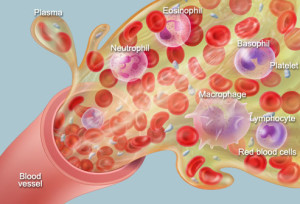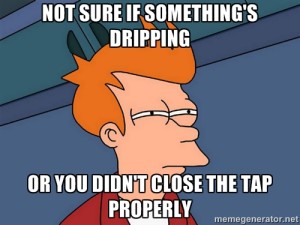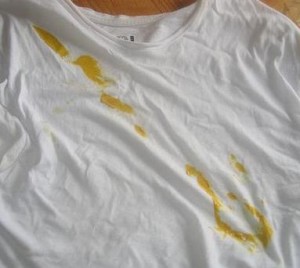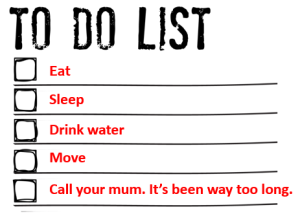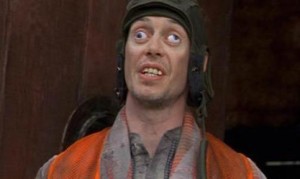Finally, we reach the conclusion. Which isn’t really a conclusion after all. But it certainly is a nice way to wrap things up with my DOMS trilogy.
If you happened to have missed part one and/or two, click these words to catch up. If you’re up to date, let’s jog your memory.
- DOMS (delayed onset muscle soreness) is currently known to be caused by what is called mechanical stress (and yes, micro-trauma is basically just another name for this) to your muscle fibres, and are a direct result from lengthening and eccentrically contracting them.
- DOMS last for anywhere between 24-120 hours. Any longer, and there might be more serious things going on at a cellular level.
- DOMS is not caused by a mysterious pain substance termed “p”, nor is it a result of a lactic acid build up.
- You cannot treat DOMS or speed up the recovery process by stretching, massaging, jumping in an ice bath, or even popping pain medication pills.
- Hindering blood flow is a concern when wanting to return to your normal gait and pain-free self.
Alright, with that covered, let’s get started by addressing a question that may be on your mind.
Why Might Blood Flow Be Important?
Well, with roughly 4-5L of blood coursing through our 100,000km long complicated and intricate network known as our circulatory system, it makes sense that maintaining a regular and optimal flow of blood is important for recovery.
From the transportation of important nutrients and oxygen to all our organs, tissues, and cells; to maintaining body temperature and pH levels; to the ebb and flow of nutrient in and waste out; and all the way to keeping us alive, blood flow is certainly an underappreciated occurrence in each of us.
There is a darker side to blood flow, however, and things like being overweight, not moving enough, consuming far too much fat and cholesterol, and smoking, all can hinder our body’s ability to perform these functions.
This is not something we want to aim for if we’re looking to stay alive. Which personally, is something I like to do every day.
Now, you might be thinking that this particular section might be contradicting the massage one from Part 2, but just to clear that up: I never said that massage can’t be used to encourage or assist blood flow, but rather that it can’t actually treat the level of pain one is in, or specifically, rectify the site of damage. (And, I do use that term ‘damage’ in the lightest sense of the word.)
Surprisingly, and in direct contrast to this, a harsh or strong massage can actually bring about DOMS, too.
But so, while I can’t say that optimal blood flow can DEFINITELY positively affect the level of pain you’re in during your DOMSdays (new term, perhaps?) following a workout, an increase or maintaining of blood flow certainly can’t hurt the recovery process.
After all, being at a healthy weight, moving, consuming an adequate and balanced diet, and not smoking, aren’t bad things to be doing with your life anyway.
But speaking of the levels of pain one experiences with DOMS, brings me to my next point.
The Psychology of DOMS
We’re all different. We all tolerate certain things at different levels, too. While a dripping tap in the background might deter ones attention to ONLY hear the tap, it might not phase another in the slightest.
The same can be said for DOMS and dealing with the pain that comes with them. Factors like previous experiences with pain, knowledge, understanding, and of course the degree of damage, all can play a part in the level of pain one will experience.
No matter who you are, the pain, the stiffness, and the unmotivated to do more feeling, all can be attained, regardless of how many times you’ve hit that DOMS “threshold”. It just takes more and more to reach it over time, which isn’t a problem if you’re interested in constantly progressing and leveling up your training. Which you should be.
Basically, pain is in the brain, and people deal with it in their own way. Lord knows how someone can build up enough of a pain threshold to handle blows to regions that would have regular folk crying uncontrollably like the man below, but it is possible.
But while pain is one thing when DOMS show up, it doesn’t account for the stiffness you feel. This next thing does though.
Movement
I know, I know, when your legs are all fatigued and ceased up, the last thing you feel like doing is getting them to move. But doing so, can aid in the increasing of your bloods circulation. And with an increase in blood circulation, the delivery of needed supplies to sites of damage, and the removal of wastes increases, too.
Now, this isn’t to say that you should be going all-out every day out of the week, but one of the worst things you can do if you’re prone to ceasing up with DOMS, is to do nothing at all. To top this, there are even studies pointing towards light exercise being better for recovery versus massages.
So, why not save a few dollars and bust out a few prisoner squats, downward dog push ups, and a couple of hip rolls to help yourself feel a little better instead?
Just like Katy Perry’s man that changes his mind all the time, going from hot to cold might be another simple method to help you feel better during DOMSdays. But not in the emotional sense. I’m talking more about the water submersible type.
You see, when we immerse our bodies in cold water, the majority of our blood seeks out important structures within us like our brain, heart, and lungs to ensure our survival.
When we return ourselves to our regular temperatures, our blood once again flows freely through its network, aided by the dilation of our vessels.
What’s cool about our technology and plumbing these days is that it allows us to mimic this type of scenario quite simply. And all you need is a shower, a hot water tank, and time.
If you have those, then here are the steps below to get you constricting and dilating those blood networks.
- Obtain shower facilities.
- Turn shower on to normal showering temperature (ideally more hot then cold).
- After a minute or so, turn off all hot water.
- Indulge in the cold for a minute or so (bonus tip: perfect activity during winter).
- Turn hot water back on.
- Cycle through this a few more times increasing the time that you’re without the hot water as time, money, and water supply lasts.
Disclaimer: I’m not saying that this will fix your DOMS, but it will certainly help you to feel a little better. But why not give it a go? And if you’re feeling really crazy, why not bust out some squats while you’re there to aid it all even more?
Spice things up a bit.
Here’s one last little method that seems to have been gaining in popularity lately. The old Indian spice known as turmeric.
Perhaps you’ve heard of this little fiery-orange substance that stains even the whitest of white shirts.
But the main reason behind this spice’s claim to fame is its anti-inflammatory ability with quotes worthy of adding here like: “(it) reduces pain associated with DOMS with some evidence for enhanced recovery of muscle performance.”
Now that, my friends, is certainly something to write home about. And really, if you happen to be a sceptic, it can’t hurt to sprinkle some of it onto your food (along with black pepper to ensure absorption) every now and again anyway, right?
That’s a wrap.
Finally, we reach the final sections. And while I could probably write another three parts to the DOMS situation (I probably will one day), it feels like we’ve been through it all together. Just you and I.
I mean, think about it, you’re now officially caught up with most of the basics regarding DOMS.
I know you’re probably a little underwhelmed with the actual evidence or life-changing news about them, or even super-secret ways for reducing, recovering, or speeding up the diminishing of them, but hopefully you’ve enjoyed the ride and like what you have learnt.
Regardless however, I believe that the above and the previous two parts provides you with some legit stuff to think about (or even research more into yourself).
For now, I want to round things up by stating the somewhat obvious, yet often overlooked component for proper recovery and pain management.
Back to basics.
Obtaining adequate sleep, hydrating optimally, and eating smartly are three things that will never go out of fashion. Always look towards and assess these three before opting for medication or hype products and services.
It seems too basic to consider, of course, but it is something that is often disregarded when it comes to DOMS, pain, or just life.
Also, whilst some of the stuff written in this series has been completely my own opinion, knowledge and experience interpretation on things, a lot of it was also written with reference to studies, articles, and book excerpts. So, if it tickles your fancy, you can check the entire list of this stuff here.
Finito.
Thanks for reading, and of course, if something works for you and you like doing it, such as any of the methods I mentioned or opposed in any of these parts, kudos to you.
After all, it is what it is, each to their own, et cetera, et cetera. And, if you’re ever in doubt about the healing rapidity of your tender DOMS, just remember: time heals all wounds. Except these crazy eyes.
10 points if you get that reference.



